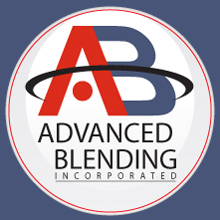RO pretreatment Systems

Reverse osmosis (RO) is a filtration method that removes many types of large molecules and ions from solutions by applying pressure to the solution when it is on one side of a selective membrane. The result is that the solute is retained on the pressurized side of the membrane and the pure solvent is allowed to pass to the other side. To be "selective," this membrane should not allow large molecules or ions through the pores (holes), but should allow smaller components of the solution (such as the solvent) to pass freely.
Reverse osmosis is most commonly known for its use in drinking water purification from seawater, removing the salt and other substances from the water molecules. This is the reverse of the normal osmosis process, in which the solvent naturally moves from an area of low solute concentration, through a membrane, to an area of high solute concentration. The movement of a pure solvent to equalize solute concentrations on each side of a membrane generates a pressure and this is the "osmotic pressure." Applying an external pressure to reverse the natural flow of pure solvent, thus, is reverse osmosis.
The process is similar to membrane filtration. However, there are key differences between reverse osmosis and filtration. The predominant removal mechanism in membrane filtration is straining, or size exclusion, so the process can theoretically achieve perfect exclusion of particles regardless of operational parameters such as influent pressure and concentration. Reverse osmosis, however involves a diffusive mechanism so that separation efficiency is dependent on solute concentration, pressure and water flux rate.
Pure Aqua offers a wide range of pre treatment such as:
¡EMulti
Media Filters
¡EActivated Carbon Filters
¡EAutomatic Water Softeners
¡EChemical
dosing Systems
¡EIron Removal Filters
¡EPre UV Sterilizers
¡EOzonation
Systems
Pretreatment
Pretreatment is important when working
with RO and nanofiltration (NF) membranes due to the nature of their spiral wound
design. The material is engineered in such a fashion as to allow only one-way
flow through the system. As such, the spiral wound design does not allow for back
pulsing with water or air agitation to scour its surface and remove solids. Since
accumulated material cannot be removed from the membrane surface systems, they
are highly susceptible to fouling (loss of production capacity). Therefore, pretreatment
is a necessity for any RO or NF system. Pretreatment in SWRO systems has four
major components:
¡EScreening of solids: Solids within the
water must be removed and the water treated to prevent fouling of the membranes
by fine particle or biological growth, and reduce the risk of damage to high-pressure
pump components.
¡ECartridge filtration: Generally, string-wound polypropylene
filters are used to remove particles between 3 - 5 microns.
¡EDosing: Oxidizing
biocides, such as chlorine, are added to kill bacteria, followed by bisulfite
dosing to deactivate the chlorine, which can destroy a thin-film composite membrane.
There are also biofouling inhibitors, which do not kill bacteria, but simply prevent
them from growing slime on the membrane surface.
¡EPrefiltration pH adjustment:
If the pH, hardness and the alkalinity in the feedwater result in a scaling tendency
when they are concentrated in the reject stream, acid is dosed to maintain carbonates
in their soluble carbonic acid form.
CO3-2 + H3O+ = HCO3- + H2O
HCO3- +
H3O+ = H2CO3 + H2O
¡ECarbonic acid cannot combine with calcium to form
calcium carbonate scale. Calcium carbonate scaling tendency is estimated using
the Langelier saturation index. Adding too much sulfuric acid to control carbonate
scales may result in calcium sulfate, barium sulfate or strontium sulfate scale
formation on the RO membrane.
¡EPrefiltration antiscalants: Scale inhibitors
(also known as antiscalants) prevent formation of all scales compared to acid,
which can only prevent formation of calcium carbonate and calcium phosphate scales.
In addition to inhibiting carbonate and phosphate scales, antiscalants inhibit
sulfate and fluoride scales, disperse colloids and metal oxides, and specialty
products can be to inhibit silica formation.



